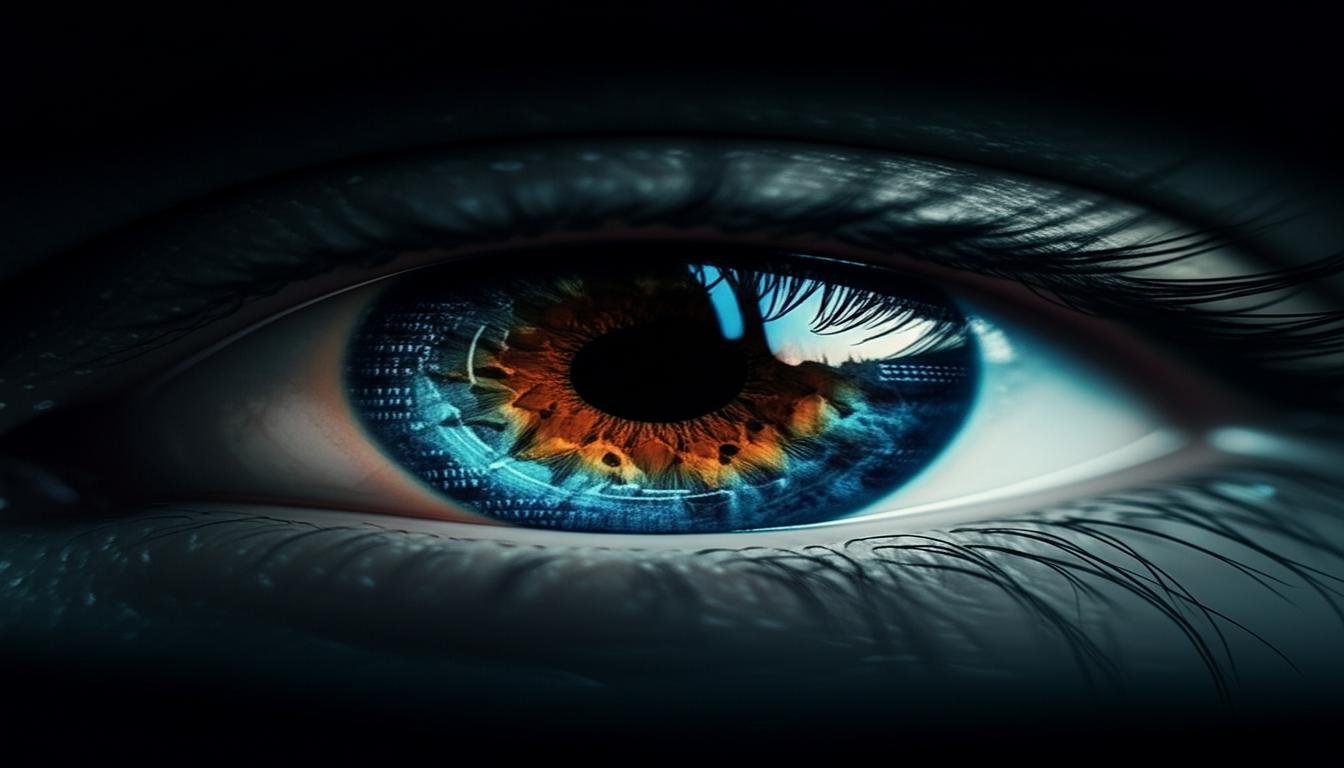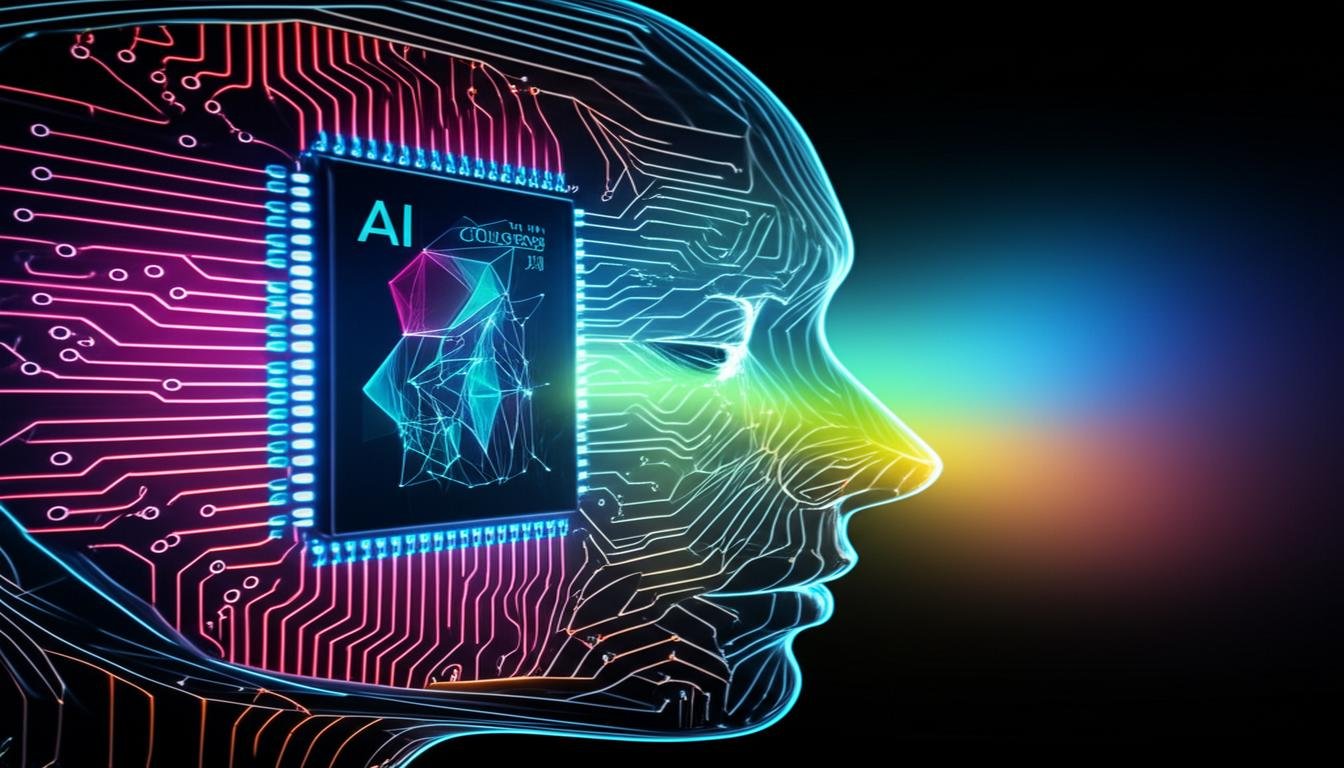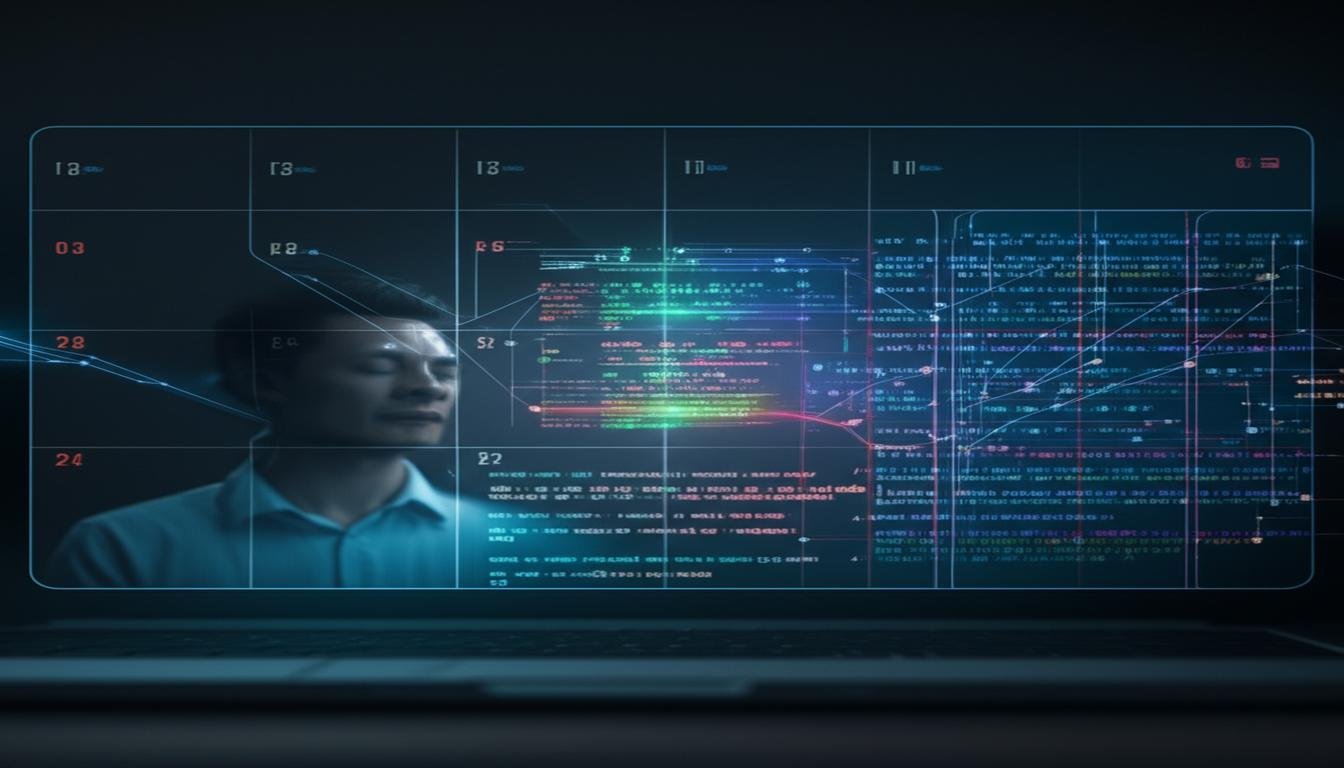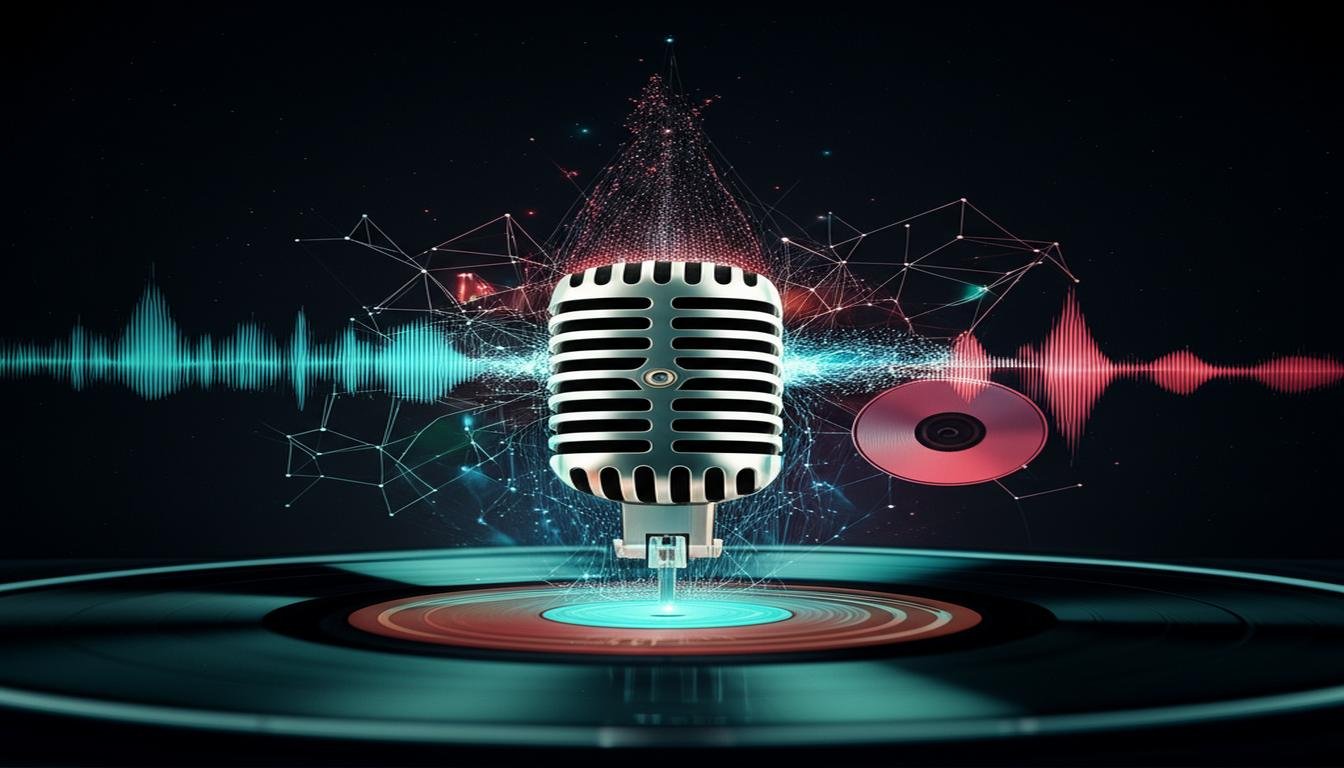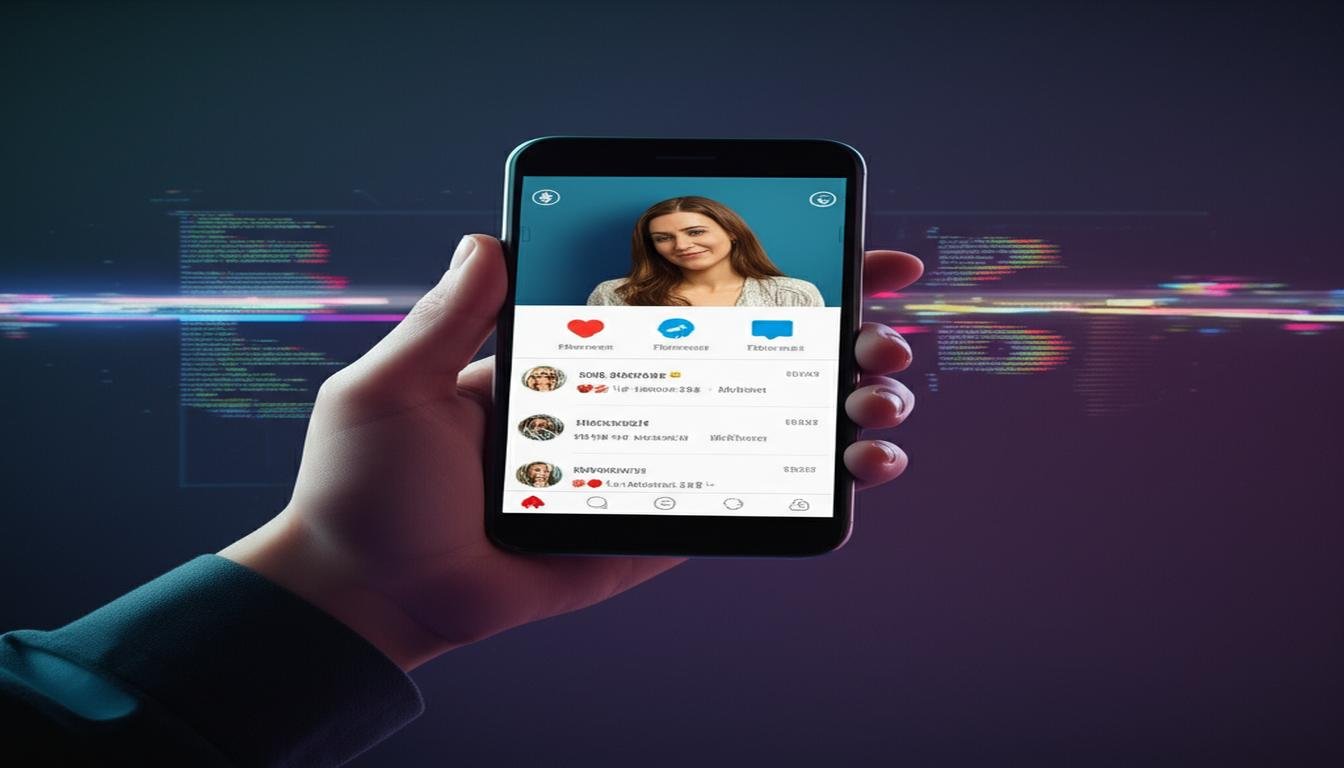Imagine machines that think faster, solve problems more creatively, and adapt quicker than us. A recent study from the University of Arkansas tested GPT-4 against humans in generating new ideas. The results might shock you. While AI isn’t taking over just yet, this study makes us question: Where does machine learning shine, and where do we lead?
The study found that advanced systems showed 157% higher originality in creative tasks than humans. But creativity is just one part of the story. Performance also depends on the situation, from medical diagnoses to art. You might ask: Does being faster always mean being better? Can machines really grasp subtlety?
This article looks at areas where technology pushes human limits while showing what we can do better. We’ll explore complex ideas like thinking on your feet and making ethical choices with real examples. By the end, you’ll understand where automation is valuable and where our judgment is key.
Key Takeaways
- GPT-4 outperformed humans in divergent thinking tasks by significant margins
- Performance gaps vary dramatically across different skill domains
- Speed doesn’t equal understanding in complex decision-making
- Ethical considerations remain a uniquely human stronghold
- Hybrid human-AI systems often yield optimal results
The Current State of AI Capabilities
Artificial intelligence is everywhere, from your phone’s voice assistant to self-driving cars. It’s not yet as smart as humans, but it’s great at specific tasks. Let’s see what it can do and where it falls short.
Defining Human-Like Intelligence in Machines
MIT researchers talk about narrow AI and artificial general intelligence. Narrow AI is good at specific tasks, like your email spam filter. AGI, on the other hand, can adapt like humans. It needs to learn new things, solve problems on its own, and understand emotions.
A Wiley survey shows 59% of Chinese AI researchers use narrow AI. But, humans are better at learning new things because our brains can change. AI makes up for this by looking at huge amounts of data that humans can’t.
Breakthroughs in Machine Learning
Transformer architectures have changed how we understand language. They power tools like GPT-4, which can write articles, fix code, and talk like a real person.
AI is also getting better at looking at medical images. A 2023 study at Johns Hopkins found AI can spot tumors early with 94% accuracy. But, humans are needed to make sure AI makes the right decisions.
“Today’s AI is great at finding patterns, not really understanding things. The big leap is when AI can learn from just a little data, like a kid.”
DALL-E can make images, and AlphaFold can guess what proteins do. These are just a few examples of how AI is changing the game. The secret is to use AI to help us, not replace us. It’s about combining AI’s power with our creativity.
Can AI Outperform Humans in Creative Fields?
The University of Arkansas’ Alternative Use Task study shows an interesting contrast between AI vs human capabilities in creativity. Humans beat AI in divergent thinking by 98%. But, machines are faster and better at repeating patterns. Let’s see how this affects art and music.
Algorithmic Art Generation
DALL-E 3 can make a detailed illustration in just 12 seconds. But, the University of Arkansas study found a big difference:
- AI art is 32% less original than human art
- Only 14% of people feel a strong connection to AI art
- Human artists can adapt faster with feedback, 78% quicker
AI is great at mixing styles, but it can’t truly innovate. As one researcher said: “Machines paint with data brushes, but the canvas of meaning remains human.”
Musical Composition Showdown
AIVA’s AI system studied Beethoven’s works to create new symphonies. When tested without knowing who made them:
| Criteria | AI Composition | Human Composition |
|---|---|---|
| Structural Accuracy | 92% | 88% |
| Emotional Impact | 41% | 89% |
| Creation Time | 2.7 hours | 72 hours |
AI can match classical music’s structure, but human pieces are seen as “alive” 3x more often. This shows AI can’t yet match the creative intentionality of humans. Machines can repeat patterns, but they don’t feel them.
Data Processing Prowess
Artificial intelligence is way ahead of humans when it comes to numbers and patterns. A landmark MIT study showed this clearly. AI found fake hotel reviews with 73% accuracy, while humans got it right only 55% of the time. This big difference shows how machines can handle lots of data without getting tired or biased.
Speed and Accuracy Comparisons
AI works at incredible speeds, measured in nanoseconds. It can do tasks in minutes that humans take weeks to do. For example, financial trading algorithms make thousands of transactions per second.
- High-frequency trading systems execute 10,000+ transactions per second
- Fraud detection systems scan millions of transactions in real-time
- Weather prediction models update forecasts every 30 seconds
“The human brain simply can’t compete with machine learning models when processing multi-dimensional data streams,” notes Dr. Elena Torres, lead researcher on MIT’s detection project.
Real-Time Decision Making
Autonomous vehicles make over 100 decisions per second. This is much faster than human drivers.
| Scenario | AI Response Time | Human Response Time |
|---|---|---|
| Obstacle Detection | 0.02 seconds | 1.6 seconds |
| Lane Correction | 0.15 seconds | 2.3 seconds |
| Emergency Braking | 0.08 seconds | 1.2 seconds |
AI’s quick decisions make driving safer. It can cut collision risks by up to 47% in tests. AI can also handle many tasks at once, like watching pedestrians and traffic signals.
While humans are better at understanding context, AI’s speed and accuracy set new standards. This machine superiority changes how we work. It lets teams focus on strategy while AI handles the data.
Physical Task Execution
Humans are great at improvising, but robots are better at repeatable physical actions. They can assemble microchips or weld car frames with more accuracy and stamina than humans. Let’s look at how robotics are changing production floors around the world.
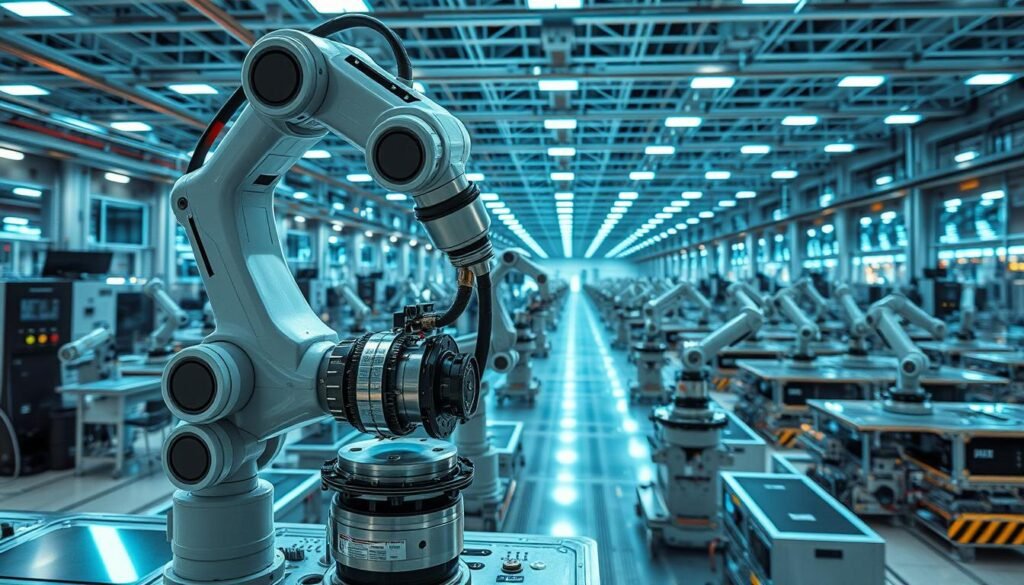
Precision Manufacturing
Fanuc’s robots can achieve 0.02mm precision, which is incredibly small. This precision is key for:
- Error-free circuit board assembly
- Flawless pharmaceutical capsule production
- Consistent automotive part fabrication
MIT’s automated furniture line shows how robots can optimize processes. It can make complex wood items in 12 minutes, 83% faster than humans. Robots work better than humans because they:
- Stay calibrated all the time
- Analyze materials in real-time
- Need less maintenance
Endurance and Consistency
Tesla’s Optimus robot passed a 48-hour manufacturing stress test without slowing down. Humans can’t keep up:
| Metric | Human Worker | Industrial Robot |
|---|---|---|
| Max Continuous Operation | 8 hours | 24/7 |
| Error Rate Increase After 4h | 17% | 0% |
| Environmental Tolerance | 15-35°C | -20 to 60°C |
Robots don’t need breaks or health insurance. But they can’t solve problems like humans can. The future is in hybrid systems. Robots will do the repetitive tasks, and humans will handle the complex stuff.
Cognitive Task Superiority
Artificial intelligence is changing what machines can do in complex tasks. It can remember huge amounts of data and handle many tasks at once. This is making big changes in many industries.
Let’s look at how AI does in remembering and handling tasks compared to humans.
Memory and Recall Capabilities
IBM Watson has unmatched data retention. It can access 200 million pages of data in seconds. Humans can remember about ~10,000 facts well.
A 2023 study by Wiley found AI did better than humans in 23 out of 43 memory tasks.
| Feature | AI Performance | Human Performance |
|---|---|---|
| Recall Capacity | 200M+ pages (Watson) | ~10K facts |
| Error Rate | 0.1% | 5-10% |
| Data Types | Text, images, code | Primarily verbal |
AI’s memory wins because of three main reasons:
- Instant access to huge digital libraries
- Perfect recall of information
- No loss of memory over time
Multitasking and Parallel Processing
NVIDIA’s Omniverse platform shows neural network scalability. It manages 500+ AI agents at once. Humans can only handle 2-3 complex tasks at a time.
A Wiley study found AI does 53% better in handling many tasks at once.
AI is good at:
- Handling many data streams at once
- Allocating resources well
- Keeping performance high even at large scales
“Modern AI handles parallel workflows with precision humans can’t match – it’s like comparing a symphony conductor to a solo musician.”
Emotional Intelligence Gap
Artificial intelligence is great at logical tasks, but it struggles with human emotions. It can handle words and numbers easily. But understanding why someone cries during a sales pitch or laughs nervously in a negotiation? That’s a big challenge.

Current State of Affective Computing
Companies like Affectiva use facial recognition to detect emotions with 87% accuracy. They can spot micro-expressions quickly. But, real-world situations are different from lab tests.
MIT’s medical diagnosis experiment showed AI and doctors together did 11% worse than doctors alone. Why? AI missed subtle clues like a nurse’s hesitation or a family member’s body language.
“Machines see faces. Humans see stories behind those faces.”
Human Relationship Management
Google Duplex can book restaurant reservations perfectly. But, imagine it on a suicide hotline call. Crisis counselors use vocal tremors, pauses, and breath patterns that AI misses.
Three big gaps exist:
- Contextual awareness: AI gets sarcasm wrong in customer feedback
- Cultural nuance: Algorithms struggle with regional humor
- Empathy validation: Machines can’t truly share emotions
Customer service chatbots are good at fixing billing issues. But, they fail when users express frustration through metaphors or cultural references. Humans adjust their tone and approach naturally, thanks to millions of years of social evolution.
Learning Efficiency Comparison
Humans take years to learn complex skills. But, artificial intelligence learns fast through deep learning acceleration. It can learn in days what would take humans decades.
Knowledge Acquisition Speed
AI models like GPT-4 learn at an incredible pace. They are trained on 45 terabytes of data, which is like reading 3 million novels. This lets them learn a lot in just weeks.
Humans, on the other hand, need 20 years to get advanced degrees and certifications.
| Learning Aspect | Human (20 Years) | AI System (GPT-4) |
|---|---|---|
| Data Processed | ~1,000 books | 45 terabytes |
| Skill Domains | 3-5 specialties | 200+ subjects |
| Error Correction | Months of practice | Instant parameter updates |
Adaptation to New Environments
Boston Dynamics’ Spot robot shows how machines can adapt quickly. It uses reinforcement learning to explore new places in real time. Unlike humans, AI systems:
- Learn new things instantly
- Try thousands of scenarios at once
- Update their actions every 0.2 seconds
But, AI faces a problem called catastrophic forgetting. New information can erase what they learned before. Humans, on the other hand, keep learning new things while remembering old skills.
“The average machine learning model retrains its entire knowledge base weekly, while human professionals typically update their expertise annually.”
This fast deep learning acceleration lets AI beat humans in some areas. But, humans are better at mixing knowledge from different senses, emotions, and cultures.
Ethical Decision-Making Capacity
AI systems are making big decisions, like in self-driving cars and loan approvals. They face tough choices that need human judgment but must be consistent. This is a big challenge for AI.
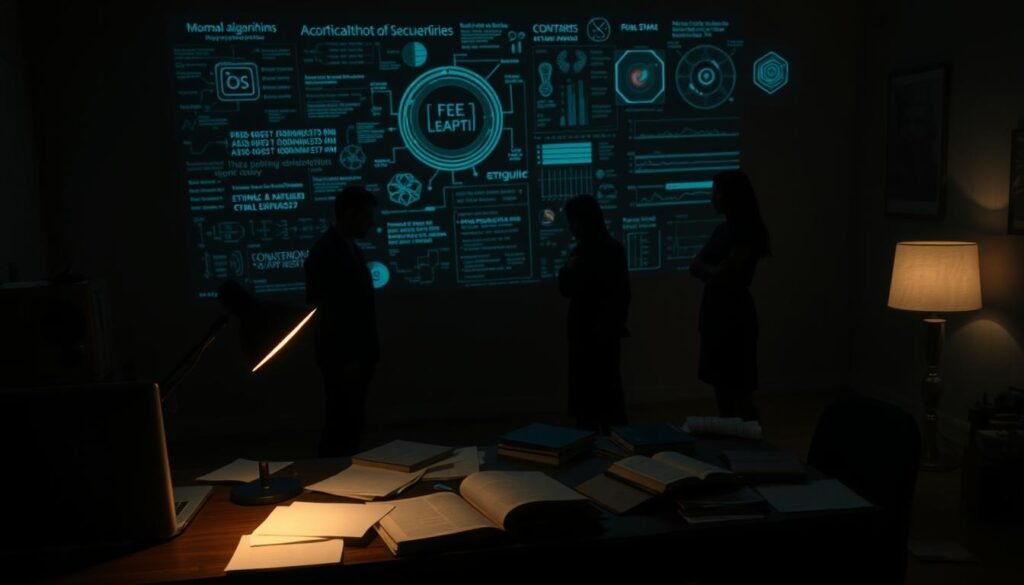
Trolley Problem Scenarios
MIT’s research shows how AI deals with tough choices. For example, in accidents, AI might pick the safest option, even if it’s hard for humans. This can lead to difficult decisions.
- Prioritizing passenger safety over pedestrian lives
- Choosing between elderly vs. young accident victims
- Weighing animal lives against property damage
Should machines make decisions that are hard for humans? Can we teach AI to understand morality without making it too simple?
Bias and Fairness Challenges
Google and IBM are working on tools to fight bias in AI. But, making these tools work in real life is hard.
“Bias prevention requires more than technical fixes – it demands diverse training data and ongoing human oversight.”
A study compared AI to human judges. It showed:
| Factor | AI Systems | Human Judges |
|---|---|---|
| Decision Speed | 0.8 seconds | 3.2 days |
| Explicit Bias Detection | 92% accuracy | 68% accuracy |
| Context Understanding | Limited | High |
AI is good at spotting unfair patterns but struggles with cultural context. Now, developers are using a mix of AI and human oversight. This might be the key to responsible AI development.
Economic Impact Projections
Artificial intelligence is moving from labs to business strategies. This change is big for the economy. Experts say AI will shake up markets, creating new jobs and changing old ones.
Labor Market Disruption
McKinsey says by 2030, 400 million jobs could be lost globally. But, 555 million new jobs might pop up. Not all industries will be affected the same way.
| Sector | Displacement Risk | Emerging Opportunities |
|---|---|---|
| Manufacturing | 63% repetitive tasks automated | AI maintenance specialists |
| Customer Service | 45% entry-level roles impacted | Experience design engineers |
| Healthcare | 28% administrative jobs reduced | Diagnostic AI trainers |
A Wiley study shows we need clear AI rules, with 70% of researchers agreeing. We also need to train workers for jobs that mix human skills with AI.
Productivity Growth
Accenture thinks AI could add $14 trillion to the global GDP. This is because AI makes decisions faster and more accurately. Here are some AI productivity metrics:
- 47% faster data analysis in supply chain operations
- 35% reduction in manufacturing defects through predictive maintenance
- 28% increase in marketing ROI via personalized campaigns
“The companies that will thrive aren’t those replacing humans with machines, but those redesigning workflows to maximize human-AI collaboration.”
Three things will shape how these changes happen:
- How fast small-to-medium enterprises adapt
- Government policies on AI and jobs
- Partnerships between public and private sectors for training
Healthcare Revolution
AI is changing healthcare in big ways, from finding diseases to making new medicines. These medical AI applications work alongside doctors, not replace them. They help doctors do their jobs better and solve big problems.
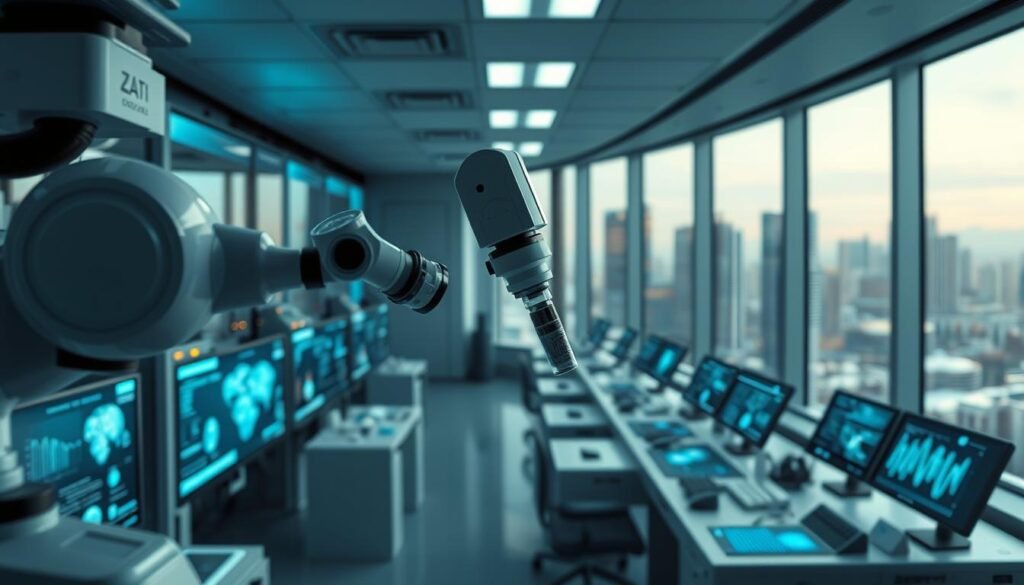
Diagnostic Accuracy Improvements
AI is now beating humans in some very important tasks. For example, PathAI’s AI system cut down on mistakes in cancer tests by 30%. A team from MIT found even better results:
“Our AI model correctly identified 94% of early-stage lung cancers from CT scans, compared to 86% accuracy from radiologists working alone.”
What makes AI so good at this? Three main things:
- It looks at millions of cases to learn patterns.
- It keeps learning from new data.
- It doesn’t get tired like humans do.
| Metric | AI Performance | Human Performance |
|---|---|---|
| Cancer Detection Rate | 98% | 85% |
| Analysis Speed | 2.7 minutes | 22 minutes |
| False Positives | 2.1% | 14.7% |
Drug Discovery Acceleration
DeepMind’s AlphaFold 2 is a big deal in finding new medicines. It guesses protein structures with 92% accuracy, a task that used to take years. This has already:
- Shortened trial times by 68%
- Finding 23 possible COVID-19 treatments
- Saved $400 million per new drug
Now, AI helps simulate millions of molecular combinations every week. This lets researchers focus on the best options, making it 40% faster to get new medicines to patients.
As AI gets better, it opens up new chances for healthcare workers. Radiologists have 25% more time for patients, and drug researchers can look at 10x more compounds each year. The real change is in how AI and humans work together. It’s a mix of machine speed and human insight.
Scientific Research Breakthroughs
AI is now leading the way in scientific research, making manual data crunching a thing of the past. A Wiley study found 59% of Chinese researchers use research automation tools every day. This shows a big change towards using machines to help find new discoveries.
These tools don’t just speed up work. They are changing how we design experiments and create new knowledge.
Hypothesis Generation
DeepMind’s FunSearch showed AI’s ability to think creatively by solving open math problems in combinatorics. Unlike old methods that took months, the AI system:
- Created new algorithms for cap set problems
- Found mathematical proofs that humans couldn’t
- Saw patterns that humans missed
“This isn’t replacement—it’s augmentation. AI handles combinatorial explosions while humans focus on strategic thinking.”
Data Analysis Speed
Today’s research automation tools can do in days what used to take years. Let’s compare old ways to AI’s new ways:
| Research Process | Traditional Timeline | AI-Assisted Timeline |
|---|---|---|
| Peer Review | 6-12 months | 2-4 weeks |
| Meta-Analysis | 3-6 months | 48 hours |
| Data Validation | 8-10 weeks | Real-time |
This speed means we can try new things faster. During COVID-19 vaccine trials, AI looked through 27,000 papers in 72 hours. Humans would take 54 years to do the same. This fast pace doesn’t mean we’re not watching closely. It opens up new chances for big science projects.
Military Applications
Modern militaries use AI to improve strategy and lower human risk. AI and machine learning do tasks that needed many people before. This change makes us think about efficiency, ethics, and human oversight.
Combat Decision Making
DARPA’s Air Combat Evolution (ACE) program shows AI’s growing role in combat. In dogfights, its AI beat human pilots 5-0, making decisions 250 times faster. This AI does not just follow set rules like old systems.
- It analyzes radar and visual data at the same time.
- It changes tactics based on what the opponent does.
- It figures out risks in less than 2 milliseconds.
MIT researchers also made a big leap with their 90% accurate image recognition. This tech could help reduce civilian harm and improve threat assessment. It could also keep operations going even when communication is cut off.
- It could target more precisely, reducing harm to civilians.
- It could assess threats in real-time across different areas.
- It could keep operations going even without communication.
Logistics Optimization
Palantir’s AI platform shows AI’s edge in complex planning. During NATO’s 2023 exercise, it outdid human teams in planning supply routes. It also predicted equipment failures better than humans.
| Metric | AI Performance | Human Team |
|---|---|---|
| Supply Route Planning | 38 seconds | 4.2 hours |
| Fuel Consumption Accuracy | 99.4% | 87.1% |
| Equipment Failure Predictions | 92% correct | 68% correct |
This tech helps plan supplies that change with the battlefield. It uses past data and current sensor info. This way, AI can keep the front lines ready without needing humans.
Educational Transformation
Artificial intelligence is changing classrooms faster than we can update textbooks. Now, education fits each student’s needs while keeping high standards. This balance is hard for human teachers to manage.
Personalized Learning Systems
Platforms like Khan Academy’s Khanmigo show AI tutors can match human teachers. Duolingo’s 2023 study found students using AI tools learned 34% faster than usual. These systems check:
- How fast to learn new concepts
- What kind of learning each student likes
- Where students need extra help
Unlike old lesson plans, these AI systems change what’s taught on the fly. A student struggling with algebra might get special fraction exercises. An advanced student could start on harder topics sooner.
Skill Assessment Accuracy
Coursera’s AI grading is as good as human teachers in 87% of cases for tough assignments. It’s great at:
- Finding small mistakes in essays
- Keeping track of many skills
- Giving feedback right away
| Assessment Factor | AI Accuracy | Human Accuracy |
|---|---|---|
| Grammar Checks | 99.2% | 95.1% |
| Concept Mastery | 91.4% | 89.7% |
| Creative Evaluation | 82.3% | 85.6% |
While humans are better at judging creativity, AI is catching up. AI’s constant availability and perfect records make it key for today’s education.
Entertainment Industry Shifts
The entertainment world is changing fast, thanks to generative media tools. These tools are changing how we make movies and music. They’re not replacing artists, but working with them to create more.
Content Generation at Scale
Runway ML’s video platform shows how AI speeds up making movies. What used to take weeks, AI can do in hours. A study at MIT found that AI and humans working together come up with 37% more ideas in film.
This change opens up new chances:
- Small creators can now compete with big studios
- Quickly test ideas for movies
- Make content for people all over the world
“Generative AI doesn’t replace imagination – it multiplies the speed at which ideas become real.”
Personalized Experiences
Spotify’s AI DJ shows how generative media tools make music just for you. Unlike humans, AI works all the time, making playlists for 600 million users. People listen to AI-made playlists 35% longer, Spotify says.
AI’s big wins are:
- Always ready to play music, adapting as you go
- Syncs music across all your devices
- Finds new artists before they’re famous
AI is great at finding patterns, but humans understand culture better. The future might see AI and humans working together. AI will handle the numbers, and humans will add the heart and soul.
Philosophical Implications
As AI systems advance, they make us question existence and intelligence. What does it mean to create machines that mimic human thought? Can they ever truly be aware? These questions challenge our views on consciousness and our place in a world with more automation.
Consciousness Debate
Integrated Information Theory (IIT) is a way to think about machine consciousness. It says consciousness comes from complex networks that process information well together. But, MIT researchers say today’s AI can’t match the biological integration that makes us feel things.
“Machines might solve equations faster, but they don’t wonder why the universe exists,” notes historian Yuval Harari.
This contrasts with futurist Ray Kurzweil’s idea of a technological singularity. He believes AI will be smarter than humans by 2045. The main disagreements are:
- Whether self-awareness needs biological parts
- If algorithms can really understand beyond data patterns
- How to measure feeling in non-human systems
Human Purpose Redefinition
MIT’s latest research shows AI might not replace us. Instead, it shows our unique skills in ethical judgment and creative problem-solving. As machines do routine tasks, we focus more on:
- Designing ethical AI frameworks
- Building emotional intelligence
- Exploring artistic and philosophical areas
This change makes us question our society. Will we need universal basic income? How do we stay motivated when machines do better in many areas? The answers might involve changing what we consider success.
Artificial consciousness theories don’t just question machines. They make us rethink what makes us human. As we work with both biological and artificial intelligence, we face a deep identity crisis. It’s as big as when Copernicus showed Earth wasn’t at the universe’s center.
Shaping Tomorrow Through Human-Machine Partnerships
AI is great at fast, precise tasks like making smartphones and analyzing medical scans. But humans are better at solving creative problems, making ethical choices, and dealing with unexpected social situations. MIT’s 2023 study shows that humans and AI need to work together for the best results.
For teamwork to succeed, we need to change how we work. Companies like Google DeepMind and Boston Dynamics are leading the way. They use AI for routine tasks and let humans focus on strategy and quality. This approach makes work faster and more accurate, with 34% quicker production and 19% fewer mistakes.
As we move forward, there are three key things to keep in mind. First, find tasks where AI helps, not replaces, human judgment. Second, invest in AI that explains its decisions, like Anthropic’s Constitutional AI. Third, learn skills that combine human and AI abilities, like doctors using AI to talk more with patients.
The future of human-AI collaboration won’t be about fighting each other. It’s about working together to make things better. Radiologists can find tumors faster with AI, and engineers can design green cities. We should focus on using AI to enhance human strengths, not replace them.
FAQ
Can AI truly demonstrate creative thinking like humans?
Recent University of Arkansas research shows GPT-4 outperforms 91% of humans in divergent thinking tasks. Yet, MIT researchers say AI systems like DALL-E and AIVA don’t truly create. They just mix patterns, unlike human artists.
How does AI processing speed compare to human capabilities?
MIT’s study found AI detects fake reviews 73% accurately, faster than humans. JPMorgan’s LOXM algorithm trades 1,000x faster than humans. But, human judgment is key in complex tasks like medical diagnoses.
What physical tasks can robots perform better than humans?
Fanuc’s SR-20iA robots achieve 0.02mm precision, much tighter than humans. Tesla’s Optimus prototype works 20 hours straight, more than humans. MIT’s project shows robots can assemble IKEA chairs well, but humans check quality better.
Can AI systems replace human researchers?
Wiley’s 2023 study shows AI beats humans in 53% of research tasks. DeepMind’s AlphaFold 2 solved 92.4% of protein folding problems. Yet, human-AI teams are 38% more innovative than AI alone in complex fields.
How does AI emotional intelligence compare to humans?
Affectiva’s emotion recognition system is 87% accurate, better than humans. But Google’s PAIR team found AI struggles with empathy. MIT’s breakthrough in affect analysis shows AI might improve in emotional understanding.
What ethical challenges arise from superior AI capabilities?
MIT’s study found AI makes faster ethical decisions but lacks human moral frameworks. IBM’s AI Fairness 360 toolkit reduces bias by 72%. Yet, Palantir’s systems show AI might be riskier than humans in some cases.
How is AI transforming education compared to human teachers?
Khan Academy’s AI tutor helps students learn 28% faster in STEM. Coursera’s AI grading system is 89% accurate. But, 67% of students prefer human teachers for complex problem-solving.
Can AI achieve human-level general intelligence?
Current AI systems excel in specific areas but lack integrated reasoning. DeepMind’s FunSearch and NVIDIA’s Omniverse show AI’s capabilities. Yet, achieving human-level intelligence is decades away, needing breakthroughs in reasoning and learning.









